Australian Half Penny types
Characteristics
Diameter - 25.4mm (1")
Weight - 5.67g (1/5 oz)
Composition - Bronze: Cu 97.5%, Zn 2.0%, Sn 0.5%
Obverse master die types
Obverse 1
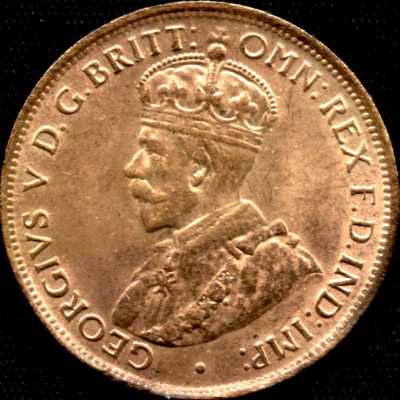
Designed by Bertram McKennal, this obverse was used on all halfpennies from 1911
to 1936 inclusive.
156 rim denticles.
Obverse 2
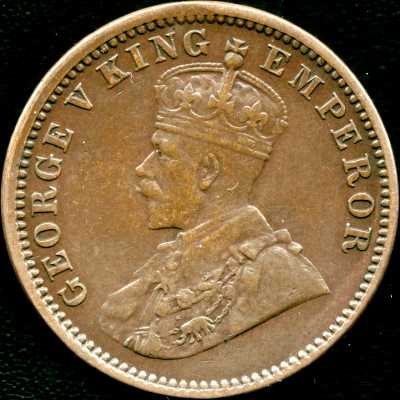
Indian quarter anna, used for a very small number of 1916 halfpennies.
Obverse 3
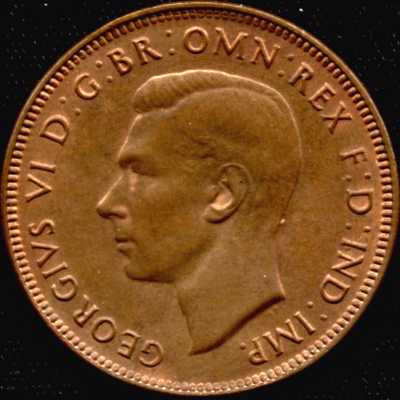
Designer was Thomas (Humphrey) Paget. This obverse was used for Australian halfpennies
from 1938 to 1948 and is identical to that used on British halfpennies 1937-1948.
147 rim denticles.
Obverse 4
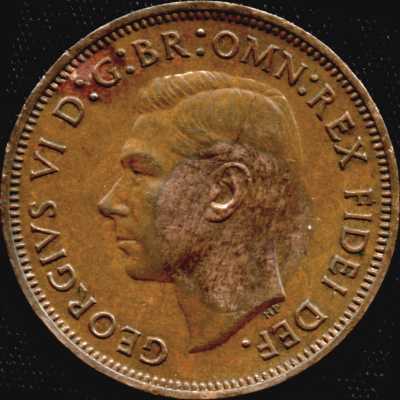
Legend was modified to remove IND IMP since India had become independent in 1947.
F D expanded to FIDEI DEF. Used for all halfpennies 1949-50, the London issue of
1951 and most of the Perth 1951 coins.
146 rim denticles. All the letters "I" are aligned with denticles.
Obverse 5
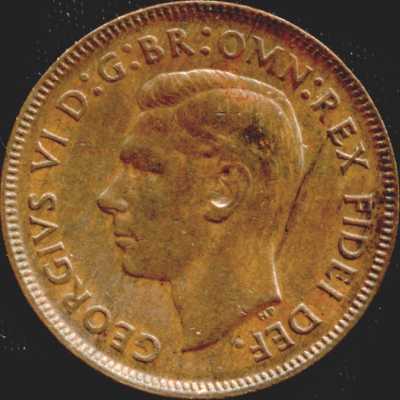
Very similar to obverse 4. Used for some of the 1951 Perth halfpennies and all
the 1952 coins.
149 rim denticles. The letters "I" in FIDEI are aligned with gaps between
denticles.
Obverse 6
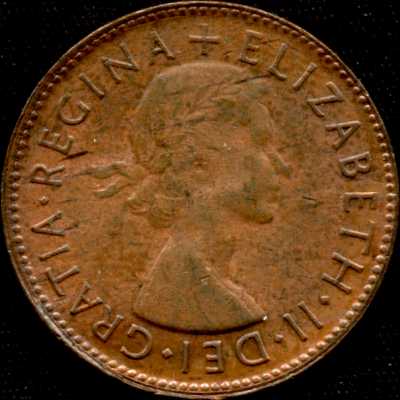
First of the obverses to show Mary Gillick's portrait of Elizabeth II. Used at
the Perth Mint for halfpennies dated 1953-55.
Rim embellishment comprises 112 round beads.
The omission of FD (Fidei Defensor) caused a bit of a stir akin to that which
followed the omission of DG (Dei Gratia) on the 1849 British "godless"
florin.
Obverse 7
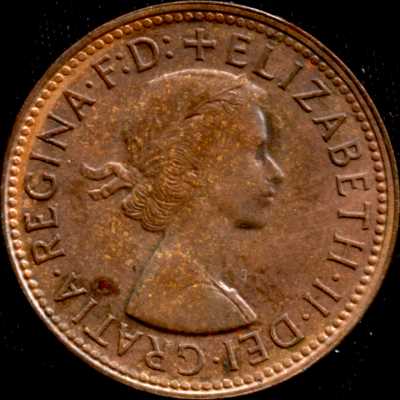
FD restored to legend. Used at Perth and Melbourne Mints for halfpennies dated
1956-64.
110 rim beads.
Reverse master die types
Reverse A
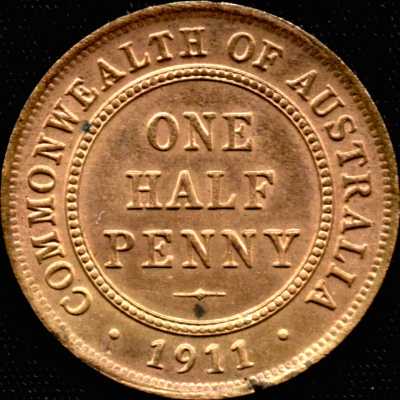
Used for all Australian halfpennies from 1911 until 1939. Designer was W.H.J.
Blakemore.
148 rim denticles.
Reverse B
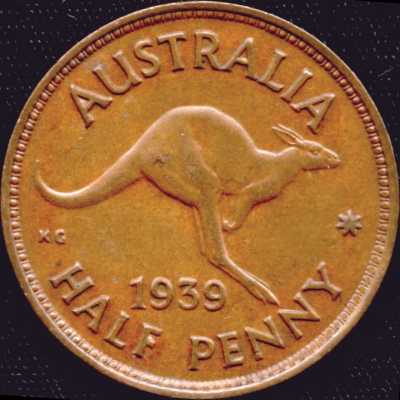
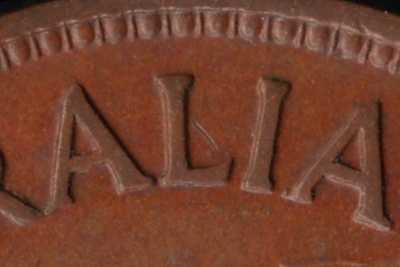
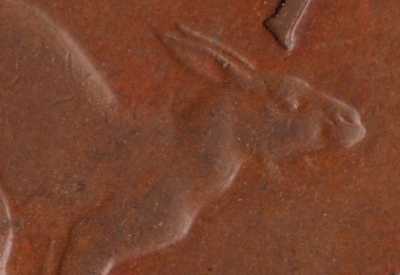
Introduced in late 1939, this reverse by George Kruger Gray was used at all mints
of issue until 1962.
Alternating thick and thin rim denticles, 106 of each. "H" aligned
with thin denticles.
Reverse C
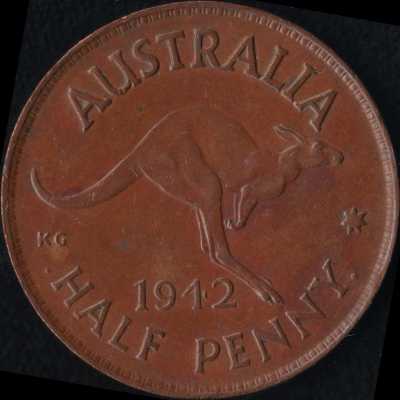
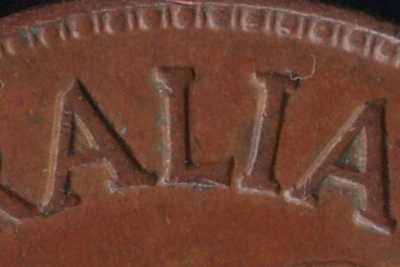
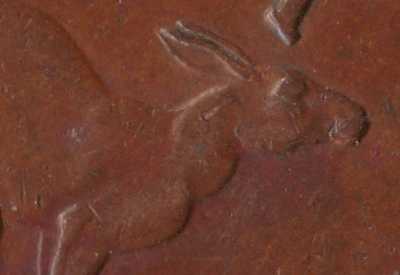
Used only at the Bombay mint for most of the 1942 issue. Very similar to reverse
B but with minor differences in the lettering and in the detail of the kangaroo's
head. The kangaroo is also in noticeably lower profile than on reverse B. Dots before
and after HALF PENNY.
Alternating thick and thin rim denticles, 106 of each.
Reverse D
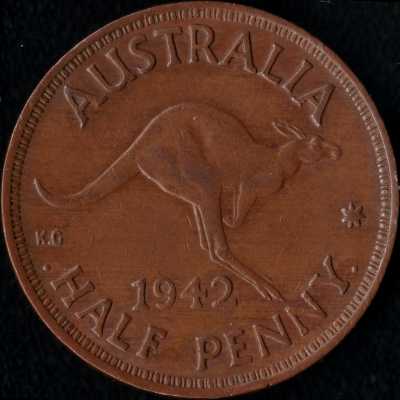
Used only at the Bombay mint for part of the 1942 issue and all of the 1943 issue,
this reverse features much taller denticles than reverse C. Dots before and after
HALF PENNY.
Alternating thick and thin rim denticles, 104 of each.
Reverse E
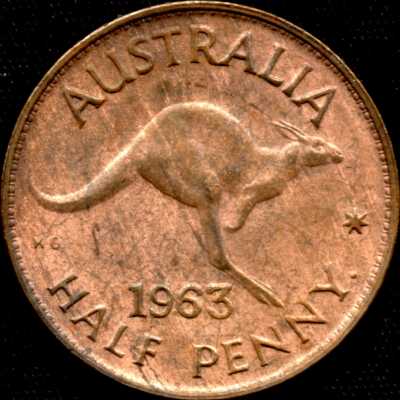
Very similar to reverse B but the alignment of the letters differs.
Alternating thick and thin rim denticles, 104 of each. "H" aligned
with wide denticles.
Other Australian coins
Elizabeth II coins (1952-2022)

